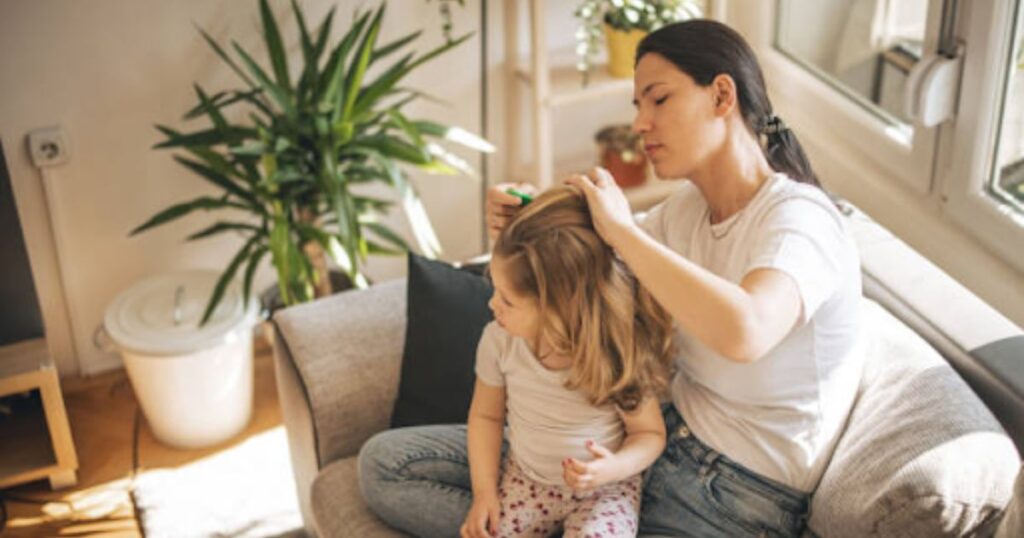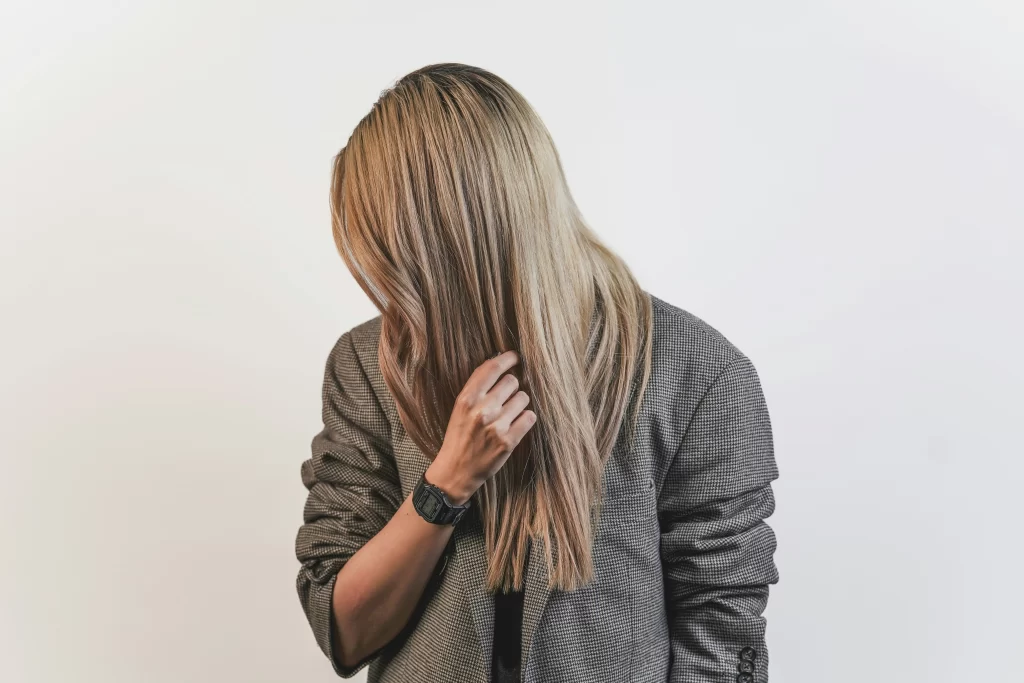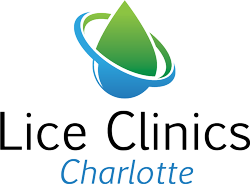Head Lice Symptoms & Signs: Things You Need To Know About Head Lice

Head lice are a common nuisance amongst millions of children and adults each year. These tiny parasites make a home in human hair and are incredibly disruptive to your scalp health. If a head lice infestation is left untreated, the head lice symptoms condition can get worse.
To fully understand lice, it is critical to understand head lice symptoms and signs that an infestation can cause. Noticing these head lice symptoms and signs is crucial for both early detection and in turn effective treatment. In this blog, we will delve into the world of head lice, providing a detailed checklist of symptoms and indicators to help you identify and address the issue promptly.
Head Lice Symptoms and Signs Checklist
When it comes to head lice there is a lot you should know as a parent, including the several head lice symptoms that can tip you off to a head lice infestation in either yourself or your children. They are critical to early detection and treatment and are listed below.
1. Is Itching and Scratching Your Head a Sign of Head Lice? It Can Be
One of the most common signs of head lice is persistent itching of the scalp. Lice feed on human blood, and their bites can cause an allergic reaction, leading to itching. While itching is a primary symptom, not everyone with head lice experiences it immediately.
2. Do Head Lice Cause Red Bumps and Sores
Intense scratching may result in red bumps and sores on the scalp. These can become infected if left untreated, further complicating the situation. Regularly inspect the scalp for any signs of irritation that head lice could be causing.
3. Look for the Presence of Lice Eggs (Nits)
Lice lay tiny, oval-shaped eggs called nits on the hair shafts. These nits are often mistaken for dandruff but are more challenging to remove. Nits are usually found close to the scalp and can vary in color, making them distinguishable from regular flakes.
4. Inspect for Adult Lice on the Scalp
Adult lice are small, wingless insects about the size of a sesame seed. They move quickly and can be challenging to spot, but a thorough examination of the scalp may reveal their presence.
5. Visible Crawling Lice
In advanced infestations, you may notice adult lice crawling on the scalp or hair. While these are more easily seen than nits, they are still relatively small and can be mistaken for other debris.
6. Beware of Hair Dryness and Tangles
Infested hair tends to become dry and tangled, making it difficult to comb. The presence of lice and nits can alter the texture of the hair, causing it to feel rough and uneven.
7. Recurring Lice Infestations
If you’ve experienced head lice before, be vigilant for recurring infestations. Lice can be persistent, and addressing the issue comprehensively is crucial to prevent future occurrences.
8. Lice Can Cause Unexplained Sores and Infections
Scratching due to lice bites can lead to open sores and infections. If you notice unexplained sores on the scalp, it’s essential to consider the possibility of a lice infestation.

Head Lice Symptoms for Children
The above list provides a list of head lice symptoms to be cognizant of in yourself and your children. However, many of them are also ambiguous and can be the result of other problems. Below is a list of further lice indicators that increase the likelihood of a head lice infestation.
1. Frequent Head Scratching in Children
Children are more susceptible to head lice due to close contact in schools and play areas. If your child complains of persistent itching or you observe them scratching their head frequently, it is essential to investigate further.
2. Contact with Infected Individuals
Head lice are primarily transmitted through direct head-to-head contact. If you or your child has been in close proximity to someone with a confirmed case of head lice, be vigilant for any symptoms.
3. Sharing Personal Items Increase Risk of Head Lice Infestations
Lice can also spread through the sharing of personal items like combs, brushes, hats, and headphones. Educate children about the importance of not sharing these items to reduce the risk of infestation.
4. Itchy Neck and Shoulders
Head lice can extend beyond the scalp, causing itching on the neck and shoulders. Check these areas in addition to the scalp for signs of infestation.
5. Family Members with Lice
If one family member is diagnosed with head lice, it is advisable to check all household members, as lice can spread easily within a close-knit environment.

Signs of a Severe Head Lice Infestation
Symptoms of head lice infestations are subjective to each person. However, a severe case of head lice infestation is likely to have one or more symptoms. Below is a list of signs that can suggest the presence of a lice infestation.
1. Irritability and Difficulty Sleeping
The discomfort caused by head lice may lead to irritability and difficulty sleeping, especially in children. If you notice changes in behavior, consider checking for head lice.
2. Visible Lice Movement During Hair Washing
Washing the hair may reveal the presence of adult lice as they become more active when exposed to water. This is another opportunity to spot them during the early stages of infestation.
3. Large Sores and Infections:
Frequent and intense scratching of the scalp due to a head lice infestation can lead to the development of open sores on the skin. The act of scratching breaks the skin’s protective barrier, making it susceptible to bacterial infections.
In severe cases, these sores may become infected. Signs of lice infection include the presence of pus, increased redness, swelling, and warmth around the affected areas. If you observe any of these signs, it is crucial to seek prompt medical attention. Untreated infections can lead to more serious complications and may require prescription medications to address the underlying issue.
4. Finding Lice in Other Areas:
Although head lice are most commonly associated with the scalp, they can extend their infestation to other areas of the body with coarse hair. The neck, back, and behind the ears are regions where lice may also be found. Lice infestations in these areas can cause similar symptoms, such as itching and irritation.
Checking for lice beyond the scalp is important, especially if there are persistent symptoms or if individuals in close contact also show signs of infestation. Proper and thorough examination of these additional areas can contribute to more effective treatment strategies and help prevent the spread of lice to others.
How to Treat Severe Head Lice Infestations
Being aware of head lice symptoms is the first step in effectively addressing and treating an infestation. Regular checks of the scalp, especially in children, can help catch head lice early on. If you suspect an infestation, consult with a lice treatment professional for guidance on appropriate treatment options.
Remember, early detection and prompt action are key to managing head lice and preventing their spread within communities. By staying informed of head lice symptoms and being proactive, you can effectively combat head lice and maintain a healthy, lice-free environment for yourself and your loved ones.
Who Can I Contact For Help with Lice Treatment Near Charlotte?
Lice Clinics of Charlotte is a leader in head lice treatment. We have a team of highly dedicated lice specialists who can educate, prevent, and treat head lice. If you or your family require help with head lice, we are a trusted source for treatment.
